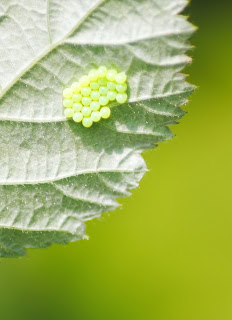This blog may help people explore some of the 'hidden' issues involved in certain media treatments of environmental and scientific issues. Using personal digital images, it's also intended to emphasise seasonal (and other) changes in natural history of the Swansea (South Wales) area. The material should help participants in field-based modules and people generally interested in the natural world. The views are wholly those of the author.
Tuesday, 31 May 2016
Monday, 30 May 2016
Seeing the Changes 1070
On the way to Oxwich, saw Foxglove (Digitalis purpurea) in flower and White waterlily (Nymphaea alba) were blooming a Broad Pool. In the Oxwich dunes, flowers included Birdsfoot trefoil (Lotus corniculatus); Kidney vetch (Anthyllis vulneraria); Bloody cranesbill (Geranium sanguineum); Stone bramble (Rubus saxatillis); Burnet rose (Rosa pimpinellifolia); Cowslip (Primula veris); Biting stonecrop (Sedum acre); Yellow rattle (Rhinanthus minor); Pyramidal orchid (Anacamptis pyramidalis); Germander speedwell (Veronica chamaedrys) and Orpine (Sedum telephium). Critters were also abundant with the Blue-tailed damselfly (Ischnura elegans); Oedemera nobilis; Chrysomela populi; a day-flying moth, Yellow belle (Semiaspilates ochrearia); Silver-studded blue (Plebejus argus); Small blue (Cupido minimus) and Small heath (Coenonympha pamphilus) butterflies. A Meadow pipit (Anthus pratensis) also sang.
Sunday, 29 May 2016
Saturday, 28 May 2016
Dodgy Business Downunder?
The UN has produced a report on climate change but, reportedly, all references to Australia (which seems to have real current problems namely the bleaching of its Great Barrier Reef and wild fires in Tasmania) have been removed after intervention from its Government, complaining that visitors to UNESCO sites might be 'put off' by sections pertaining to this continent (www.theguardian.com/2016/may/27/australia-scrubbed-from-un-climate-report-after-government-intervention). Commentators (including some Australians) suggest that this is 'unprecedented' and it sits strangely with the reported recent axing of many climate-change studying scientists from the CSIRO. Inconvenient truths can, apparently, be whitewashed even from the reports of world bodies.
Friday, 27 May 2016
Thursday, 26 May 2016
Tuesday, 24 May 2016
Monday, 23 May 2016
Fat of the Land?
The National Obesity Forum and the Public Health Collaboration have called, in a report, for an end to the general UK advice to adopt a low fat diet if you want to lose weight (www.theguardian.com/society/2016/may/22/official-advice-to-eat-low-fat-diet-is-wrong-says-health-charity). It is true that, gramme for gramme, fat contains more calories than carbohydrates but it is argued that diets high in sugars and starch stimulate the body to store more polysaccharides and are a bigger contributing factor to obesity. They also argue that some fats are beneficial and actually protect against conditions like heart disease (generated by atherosclerosis- plaque forming in the blood vessels). The trouble is that there are many different kinds of fats (saturated, unsaturated and trans fats) as well as 'good' and 'bad' forms of cholesterol (a steroid which is produced in the liver as well as being taken in via food). It may be quite difficult for people to 'take on board' the messages about fats (especially as the labelling of certain foods may not be clear). In general, plant (like olive oil) and fish (like cod liver oil) generated fats are healthier than mammal versions (like butter and lard). Losing weight does mean limiting calorie intake along with modifying what you eat. Getting people on to a Mediterranean diet might prove quite difficult.
Sunday, 22 May 2016
Europe's Aversion to GM Crops
The use of GM crops in Europe has had a strong newspaper endorsement (www.theguardian.com/commentisfree/2016/may/22/observer-view-on-genetically-modified-gm-crops). This takes place along with simultaneous predictions of more famines (due to crop failure) in Africa, resulting from climate change. I have never really found the objections to GM crops very convincing as a) all current crops are genetically modified by selective breeding (a less precise way of producing change to develop desirable features); b) pollen recognises no national boundaries (so if you have GM in a neighbouring country you will not be able to 'keep it out'); c) few people object to GM technology in the production of medicines and d) we are already very good at producing 'super weeds' via introductions of alien species. Well-regulated (including non-exploitative) GM technology must have a role in our attempts to deal with climate change and the burgeoning human population. I simply hope that it will be developed carefully.
Bite to Eat?
There are reports that several Nile crocodiles (Crocodylus niloticus) have been captured in the wilds of Florida (www.theguardian,com/us-news/2016/may/21/african-nile-crocodiles-captured-florida). Unlike the native alligators, these faster-growing (up to 5.5 m) reptiles, are people-eaters (they may thrive also on the native alligators, birds, mammals and companion animals of that state). Nobody is entirely sure how they got to the Florida swamps (they do not appear to be genetically linked to members of this species in US zoos) but scientists believe that they might be former 'pet' animals that proved too large and voracious for their owners. Florida, apparently, has the highest proportion of introduced species in the US. Be careful what you let out!
Friday, 20 May 2016
Subscribe to:
Comments (Atom)
Sandwich Island Saga 70. EV or not EV
Electric vehicles (EVs) are very popular in Hawaii. They run on solar and don't emit greenhouse gases. Their weights, howeve...

-
I n the UK and US, a pparently popular and successful vegan/vegetarian restaurants are reportedly closing or adding meat to their menus ( ...
-
Early ripening fruit may seem convenient but some folk think it confirms environmental stress. There's also a possibility th...





















































%20mating%20NWCW.jpg)

